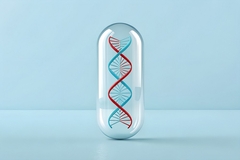High Salt Foods Should Have A Label

The AMA suggested high salt foods, those containing more than 480 milligrams, should have labels which include an image of a salt-shaker next to the word ‘high', accompanied by a red exclamation mark.
15/06/06 High salt foods should have a label saying so, said the American Medical Association (ASA) during its annual meeting. The AMA also urged the US government to encourage food makers to reduce salt content in foods by 50% over the next ten years.
The AMA suggested high salt foods, those containing more than 480 milligrams, should have labels which include an image of a salt-shaker next to the word ‘high', accompanied by a red exclamation mark. The majority of AMA board members said the FDA should remove salt from its list of safe foods.
According to the AMA, Americans could easily cut their daily salt intake by 50% and still be consuming the right amount. The average American consumes 4 to 6 grams of sodium each day. The American Heart Association sets the daily maximum at 2.3 grams and 1.5 grams for those with hypertension and those at risk of hypertension.
Eating too much salt is linked to a higher risk of hypertension as well as some cardiovascular diseases.
About one third of all American adults suffer from hypertension. Cardiovascular diseases are the nation's number one killers.
Some in the food industry say that reducing salt content by 50% would make many foods less tasty than they currently are.
Others say that reducing salt content by 50% would feel strange at first, while the taste buds get used to it. However, after a short period people would start to enjoy the taste of food again, as well as benefiting from better health.
Doctors and other health care professionals enthusiastically welcomed the AMA's statement.
It is often not possible to know that certain foods have a high sodium (salt) content just by tasting them. Salt is not used just for taste, but also as a preservative and texture enhancer. Some studies have indicated that more than three-quarters of people's salt intake in the USA does not come from the salt-shaker, but rather from processed food. There is so much salt in processed food that the risk of hypertension is a real danger.
Dr. James Rohack, a cardiologist and AMA board member, said that sodium intake is the number one cause of treatable cases of hypertension in the USA. Lowering your salt intake, while at the same time increasing your level of physical activity massively raises your chances of controlling your hypertension without drugs, he said.
The Salt Institute said the AMA's recommendation is scientifically unjustified, insisting that not a single study supports the AMA resolution. So far, if one just quotes organisations included in this article - The American Medical Association and the American Heart Association - two don't agree with the Salt Institute. It would be interesting to find out how many medical, dietary and health related organisations would agree with the AMA and AHA, and how many would agree with the Salt Institute. The question could simply be “Is it OK to carry on consuming 4 to 6 grams of salt per day, or would it be better to consume 2.3 grams of salt per day?”












